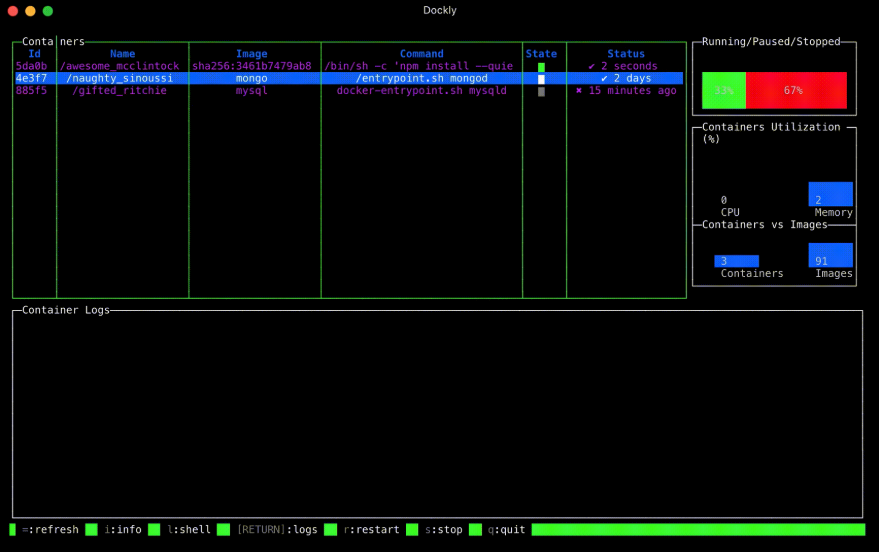Dockly is an interactive TUI (terminal user interface) for managing Docker containers, images, and other entities. It's convenient, minimalist, and allows you to quickly view logs, manage containers, and monitor Docker status directly from your terminal.
In this article, we’ll walk through how to install Dockly on Linux, macOS, and Windows (via WSL), and how to get started using it.
What is Dockly?
Dockly is an open-source utility written in Node.js that uses the Docker API to retrieve data. It allows you to:
- View a list of containers, their status, images, and volumes
- Start, stop, and remove containers
- View logs in real-time
- Connect to a container’s terminal using exec

Requirements
Before installing Dockly, make sure you have the following installed:
- Docker: Version 1.13 or higher
- Node.js and npm: Ideally the latest LTS version
To check if they are installed, run:
docker --version
node -v
npm -vInstallation
1. Via npm (recommended method)
npm install -g docklyTo verify the installation:
dockly --versionTo launch Dockly:
docklyDockly will automatically connect to the default Docker socket at /var/run/docker.sock.
2. Run Without Installing (via npx)
If you don’t want to install Dockly globally:
npx docklyThis is a good option for one-time or temporary use.
Installing on Windows (via WSL)
For Windows users, the best way to run Dockly is through WSL (Windows Subsystem for Linux):
- Install WSL and choose a distribution (e.g., Ubuntu).
- Install Node.js and Docker inside WSL.
- Ensure that docker.sock is accessible within WSL.
- Install Dockly:
npm install -g docklyQuick Usage Guide
Dockly’s navigation is very straightforward:
- ↑/↓— move between containers
- Enter — view container details
- l> — view logs
- e — execute terminal (exec)
- s — start container
- S — stop container
- d> — delete container
Press ? in the UI for a full list of shortcuts.
Useful Launch Parameters
You can run Dockly with a specific DOCKER_HOST:
DOCKER_HOST=tcp://192.168.1.100:2375 docklyOr specify a custom socket path:
dockly --socketPath /path/to/docker.sockSecurity Notice
If you’re using Docker over a TCP connection, make sure it’s protected with TLS.
Dockly does not support authentication, so do not connect to unsecured Docker APIs.
Uninstalling Dockly
To remove Dockly:
npm uninstall -g docklyConclusion
Dockly is a great tool for anyone who prefers the terminal and wants quick, visual access to manage Docker containers. Its simple installation, intuitive UI, and powerful features make it a valuable tool in any Docker-powered workflow.



